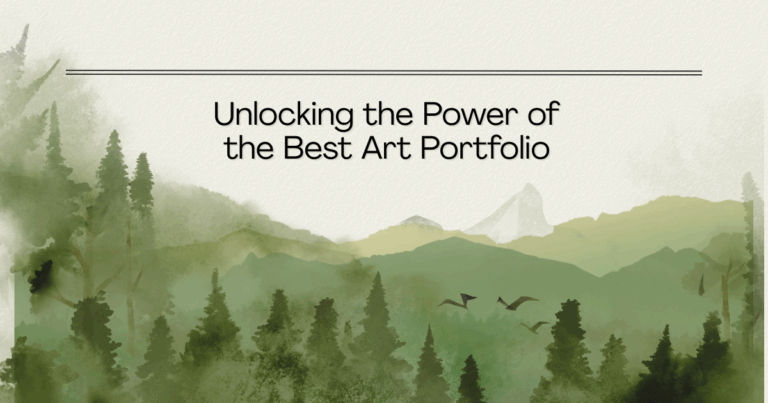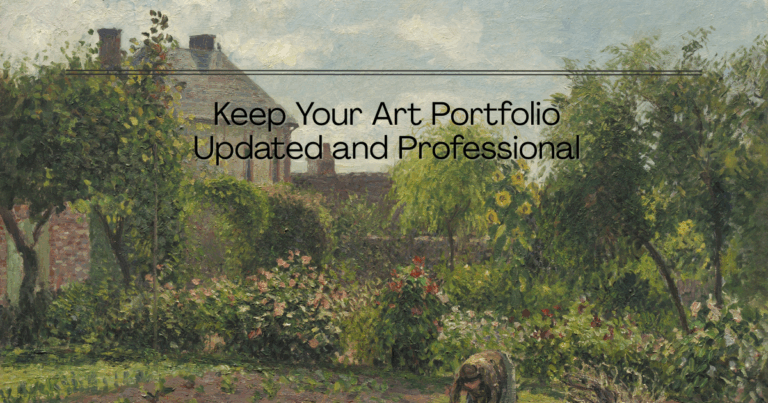10 Essential Tips for Creating an Irresistible Artwork Portfolio That Showcases Your Talent
In today’s competitive art world, your portfolio is more than a collection of your best work—it’s your voice, your identity, and often your first impression. Whether you’re preparing for a gallery pitch, applying to art school, or building your freelance career, a compelling portfolio can be the key that opens doors and earns opportunities.
But what makes a portfolio truly irresistible? It’s not just about including your most polished artworks. It’s about creating a cohesive and intentional narrative—one that reflects your artistic journey, highlights your technical ability, and communicates your creative vision.
In this article, we’ll walk through ten essential tips to help you build an artwork portfolio that doesn’t just look good, but resonates. From curating the right pieces to mastering presentation, these strategies will help you stand out in a crowded field and make your work unforgettable.
1. Understanding the Importance of an Artwork Portfolio
Think of your portfolio as your personal gallery, tailored to your audience. It tells a visual story of who you are, what you create, and what you stand for.
An artwork portfolio serves multiple purposes:
- It showcases your technical proficiency and creativity.
- It demonstrates your ability to curate, edit, and present.
- It builds trust with viewers—be they curators, clients, or collaborators.
In essence, your portfolio is your professional handshake—make it confident and clear.
2. Defining Your Artistic Style and Vision
Before selecting what to include, you need to define what you want to communicate. What is your signature as an artist?
Ask yourself:
- What themes, emotions, or ideas consistently appear in your work?
- What medium or techniques do you specialize in?
- What makes your art uniquely yours?
By clarifying your style and message, you ensure your portfolio doesn’t just showcase what you do, but why you do it.
3. Selecting the Right Pieces to Include
Curation is an art form in itself. Instead of trying to show everything, focus on work that best aligns with your goals and artistic voice.
Tips for choosing:
- Prioritize quality over quantity—8 to 15 strong pieces is often enough.
- Include a variety of work that shows range, but keep it cohesive.
- Tailor the selection to your audience (e.g., illustration-heavy for editorial clients, conceptual for gallery submission).
If you’re unsure, seek feedback from mentors or fellow artists—they can help you spot pieces that truly stand out.
4. Organizing Your Portfolio for Maximum Impact
How you sequence your work matters. Just like a well-written story, your portfolio should have a beginning, middle, and end.
Structure suggestions:
- Lead with impact: Start with a strong, attention-grabbing piece.
- Build with intention: Arrange pieces by theme, medium, or chronology.
- Close with confidence: End on a memorable or personal note.
If using chapters or categories, make the transitions smooth—your portfolio should feel like one cohesive experience.
5. Crafting Compelling Descriptions for Each Artwork
Each piece benefits from a bit of context. A well-written description can elevate the viewer’s understanding and emotional connection to the work.
Include:
- Title, medium, dimensions, and year
- A short narrative: What inspired the piece? What challenges did you overcome?
- Insight into your process or concept development
Aim for clarity and authenticity—you don’t need to write an essay, but a few thoughtful lines can go a long way.
6. Choosing the Best Format: Digital vs. Physical Portfolios
Depending on your goals, your portfolio format may vary.
Digital Portfolios:
- Ideal for sharing online, applying to freelance work, or emailing galleries.
- Can be hosted on a personal website or presented as a PDF.
- Offers flexibility (include video, animations, hyperlinks).
Physical Portfolios:
- Perfect for in-person interviews, reviews, or exhibitions.
- Showcases attention to detail and material presentation.
- Often seen as more personal and immersive.
In many cases, having both formats ready gives you the flexibility to adapt.
7. Utilizing High-Quality Images and Visuals
No matter how good your art is, poor photo quality can diminish its impact.
Best practices:
- Use natural lighting and neutral backgrounds when photographing.
- Scan smaller works if possible for optimal clarity.
- Edit images to ensure color accuracy, but avoid over-processing.
- Maintain consistent resolution: 300 DPI for print, 72 DPI for web.
Remember, your visuals represent your professionalism—make them sharp and clean.
8. Incorporating Personal Branding into Your Portfolio
Your portfolio should reflect not only your art, but your identity as a creative professional.
Ways to integrate branding:
- Include an artist bio or mission statement.
- Use consistent fonts, color schemes, and layout elements.
- Add your logo or signature if applicable.
- Include links to your website, social media, or contact info.
Branding helps create recognition and makes you memorable, especially when applying for multiple opportunities.
9. Tips for Presenting Your Portfolio to Potential Clients or Galleries
Your portfolio should reflect not only your art, but your identity as a creative professional.
Ways to integrate branding:
- Include an artist bio or mission statement.
- Use consistent fonts, color schemes, and layout elements.
- Add your logo or signature if applicable.
- Include links to your website, social media, or contact info.
Branding helps create recognition and makes you memorable, especially when applying for multiple opportunities.
10. Regularly Updating and Refreshing Your Portfolio
Your portfolio should evolve with you. Outdated work can make you look stagnant, even if your skills have improved.
Make it a habit to:
- Review and revise your portfolio every few months.
- Replace older work with newer, more aligned pieces.
- Create different versions for different goals (e.g., gallery vs. client work).
- Document and archive any exhibitions, commissions, or achievements.
Your portfolio isn’t set in stone—it’s a living reflection of your journey as an artist.
Final Thoughts: Make Your Portfolio Work for You
An irresistible portfolio is not just about dazzling visuals. It’s about intention, clarity, and connection. By defining your voice, curating with care, and presenting your work with professionalism, you not only showcase your art—you tell your story.
Whether you’re applying to a prestigious program, courting a new client, or pitching to a gallery, these ten tips will help you build a portfolio that’s not only impressive but unforgettable.
An irresistible portfolio is not just about dazzling visuals. It’s about intention, clarity, and connection. By defining your voice, curating with care, and presenting your work with professionalism, you not only showcase your art—you tell your story.
Whether you’re applying to a prestigious program, courting a new client, or pitching to a gallery, these ten tips will help you build a portfolio that’s not only impressive but unforgettable.



